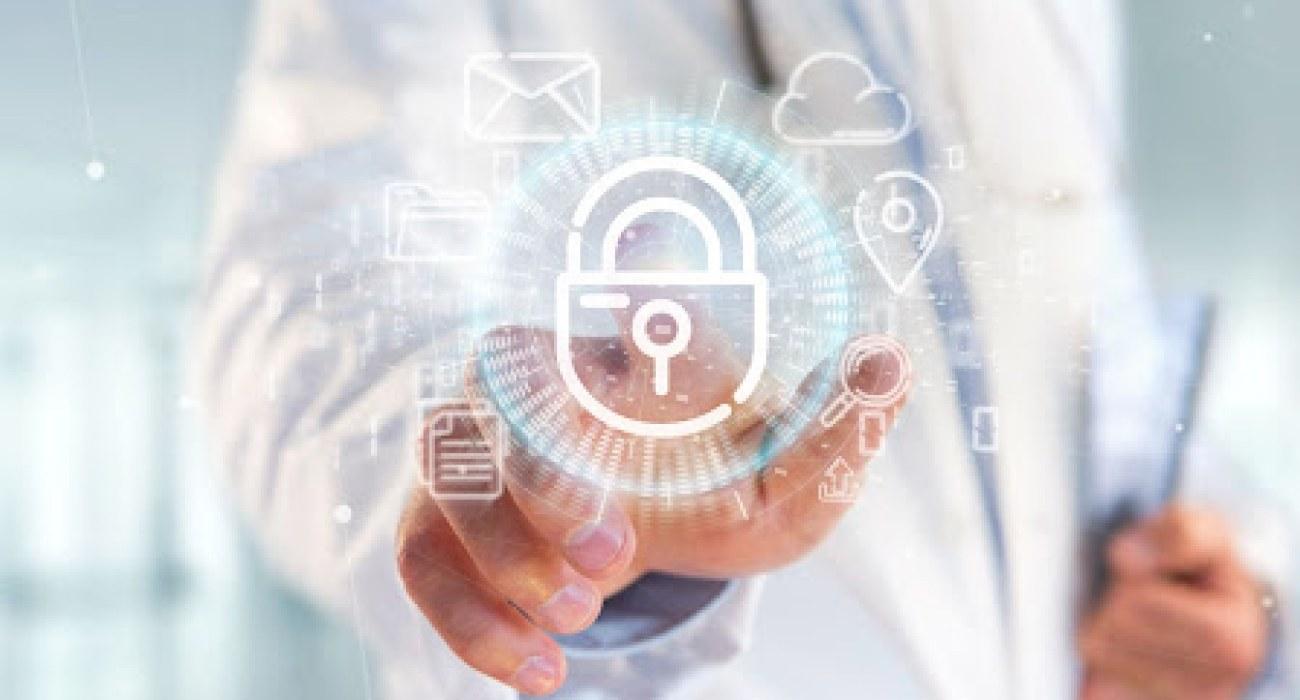The healthcare system has pushed hard to digitize many of its systems to streamline administrative processes. With this sensitive and potentially lucrative patient information available electronically, they have unintentionally exposed patient information to cyberattacks.
Breached data is often sold on the dark web, where personal information is used to commit fraud and other crimes. This has made it more necessary than ever for these organizations to understand and deal with cybersecurity incidents.
The Effects of Cyberattacks on Healthcare
The digitalization of sensitive patient and medical information has drastically increased its vulnerability to cyber threats. This has resulted in devastating and costly cyberattacks in the healthcare industry.
The 5 biggest cybersecurity threats in healthcare cybersecurity include ransomware attacks, phishing scams, insider threats, medical device hacking, and unsecured IoT devices.
Each of these threats poses unique challenges when trying to protect against them. Medical device hacking, for example, can result in hackers disabling pacemakers or falsifying medical data. Phishing scams, on the other hand, use social engineering tactics to gather sensitive information like passwords, contact details, and credit card information.
Cybercriminals can steal personal information that can be used for identity theft, medical fraud, or other criminal activities. Attackers can also hack medical devices and compromise patient data. This puts patients at risk of medical complications and even increased mortality rates, as medical decisions based on inaccurate information can have severe consequences.
These attacks are costly, causing organizations to spend significant amounts of time and money to recover from the damage. Recent healthcare data breach statistics show that data breaches cost the healthcare industry $10.1 million on average.
To combat these threats, healthcare organizations must take proactive measures to protect themselves against cyberattacks. This includes implementing security procedures, training staff on cybersecurity best practices, and investing in technologies such as artificial intelligence (AI), machine learning, and blockchain.
Overall, protecting against cybersecurity threats in healthcare requires a collaborative effort between healthcare providers, government agencies, and cybersecurity companies.
By working together to implement security procedures and stay up-to-date on the latest threats and technologies, the healthcare industry can protect sensitive patient data and prevent life-threatening outcomes.
Overview of the 5 Most Significant Cybersecurity Threats
The following are some of the biggest cybersecurity threats that the healthcare industry faces today:
Ransomware Attacks
Ransomware attacks are malware that encrypts data and demands payment for the decryption key. By targeting these systems, cybercriminals jeopardize patient safety by preventing medical staff from accessing medical records and treatment plans.
These cybersecurity threats have a particularly high impact on the safety of patients because of the critical information held for ransom by the attackers. Organizations targeted by such an attack face reputational and financial damage, which is sometimes more adverse than the attack itself.
Backup and disaster recovery plans are essential for these types of scenarios. This allows the opportunity to restore up-to-date information quickly when an outbreak has been successfully quarantined or removed.
Phishing Scams
Phishing scams are attempts by cybercriminals to get login credentials to systems, which grants them access to confidential records and systems. Other private information, such as financial records and patient data, is also targeted in these cyberattacks.
These attacks don’t need to be technically elaborate, either. A little social engineering can go a long way. Cybercriminals still use phone calls to extract valuable information, such as login details and other sensitive information.
Employee training and education are necessary to prevent and protect against phishing scams within an organization. Regular training and refresher courses make a huge difference, so planning ahead is crucial.
Insider Threats
Individuals working within the health sector can sometimes pose a threat to patients and organizational safety by disclosing information through accidental, negligent, or intentional actions. It is a growing problem that shows no signs of slowing down.
The consequences of insider threats can cause real and serious damage to a healthcare organization, thanks to authorized users' access to company resources. Again, user training and education can go a long way to help keep employees informed about the potential consequences of their actions or inactions.
Medical Device Hacking
Medical device hacking is the act of modifying a device to do the following:
- Perform a task it wasn’t designed for
- Change a prescription dose or frequency of doses
- Maliciously attack a device so that it no longer works correctly
- Obtain or compromise patient data
However, the consequences can be even more severe. Medical device hacking can potentially lead to patient harm, injury, or death. These devices are designed to operate within very specific parameters. If they are not adjusted after a modification has been made to the hardware or software of a device, there can be negative patient outcomes.
Unsecured Internet of Things (IoT) Devices
IoT devices have become very popular in recent years, making them ubiquitous in some industries. Not all IoT devices follow specific safety protocols or best practices. If these devices are not segmented into their own VLANs, they are at a higher risk of network security vulnerabilities.
Some healthcare organizations may be able to work closely with the manufacturer to ensure security standards are met or exceeded. This allows the security and technical staff to make more informed decisions when deciding on an IoT product to acquire for their operations.
In the next few sections, we will go into detail about each of these cybersecurity threats. We will define and explain what they are, provide real-world examples of where they occurred, and discuss the impact these attacks had on the targeted health systems.
Some of the solutions to these problems are as simple as user training in the case of social engineering. Others, such as ransomware, need a few different components to develop a workable solution that offers mitigation and disaster recovery.
Ransomware Attacks
Ransomware attacks involve a malicious piece of software that uses encryption to make user data inaccessible. Once the data has been encrypted, it can only be unlocked or decrypted after paying a ransom to the hackers responsible for the attack.
Encrypted data prevents patients from accessing their most recent information and medical records. If backups are not restored properly, some of this data may be lost forever. This can cause untold administrative costs, as well as billing problems.
Medical information is sensitive and confidential. Losing this data can have serious consequences for a hospital or healthcare organization. Hackers understand this and use it as a means to increase their chances of extorting a ransom out of their victims.
An example of this occurred in 2021 when the Health Service Executive of Ireland (HSE) was hit with national outages once its systems were infected.
Universal Health Services, which has over 400 facilities across the USA, Puerto Rico, and the United Kingdom, were affected. This caused disruptions at many of its locations and affected appointments and treatments of patients in some cases.
How to Protect From Ransomware Attacks
To mitigate and reduce damage from ransomware attacks, organizations can:
- Utilize security testing tools regularly
- Store backups on a separate secure device
- Update and patch systems regularly
- Restrict user access
Phishing Scams
In 2020, the Department of Health and Human Services reported that phishing attacks were the most common cause of healthcare data breaches. These scams are social engineering attacks that trick people into giving away information. In the healthcare sector, victims of phishing scams can result in damaging health information and security breaches.
Once a social engineering attack successfully accesses company resources, it can result in reputational and financial losses, compromised medical data, and patient information theft. These attacks can also expose systems to outsiders who can infect key infrastructure like file servers.
Phishing scams occur without individuals realizing they are divulging potentially sensitive details. Attackers can obtain sensitive information, such as user login details, financial information, patient addresses, and credit card numbers.
Phishing scams look like real messages and communications, with 96% coming as emails. Others can be in the form of text messages, phone calls, and social media. Many scams can be difficult to differentiate between what is legitimate and what is not, as they rely on a lack of cybersecurity training for users.
Facebook and Google were both victims of phishing scams between 2013 and 2015. A cybercriminal managed to impersonate a vendor and sent false invoices for millions of dollars, which were paid.
How to Mitigate Phishing Scams
Healthcare organizations can reduce the risk of phishing scams by taking proactive measures, such as:
- Enforce employee cybersecurity training and education
- Limit employee access to sensitive information
- Use a password management tool
Insider Threats
Insider threats are a major concern for the healthcare industry. These cyberattacks are not always perpetrated by a bad actor, which makes it hard to mitigate actions from a legitimate employee with appropriate access to data.
Users authorized to access systems and data can accidentally, negligently, or maliciously cause damage to the infrastructure and data. This can result in patient information and records being destroyed, stolen, or maliciously edited.
For example, in 2018, an employee at the Texas Health and Human Services Commission was caught stealing the personal information of more than 2,000 Medicaid clients.
Insider threats have the potential to unleash other cyberattacks, such as malware and ransomware. They can also allow access to additional attackers that pivot the attack and acquire additional targets on the network.
Other potential threats to security involve unauthorized access to physical locations where equipment and medical devices can be stolen.
How to Protect From Insider Threats
Identifying insider threats is quite challenging, as it can be difficult for organizations to pinpoint employees or trusted users who are causing problems. Nonetheless, there are ways organizations can limit potential damage from insider threats:
- Monitor and log user activity
- Implement background checks
- Issue employee training
Medical Device Hacking
Medical devices are any appliances, machines, or software used for medical purposes. Examples include insulin pumps, pacemakers, and defibrillators.
The complexity, lack of security standards, and difficulty in updating the firmware and software of these devices make them attractive targets for hackers. Additionally, healthcare organizations may not prioritize cybersecurity as they focus more on patient care, leaving their networks and devices vulnerable to cyber threats.
Medical device hacking refers to the unauthorized access or control of medical instruments by cybercriminals. These attacks pose significant risks to patients as they can cause harm or even death by altering the device's function, stealing sensitive patient data, or introducing malware into hospital networks.
For example, a hospital's electronic medical record system could be hacked, preventing doctors from accessing patient information, medications, and treatment history. This could delay treatment or lead to incorrect medical decisions that could harm patients.
Not all medical devices follow best practices regarding cybersecurity. In 2017, the US Food and Drug Administration issued a warning about vulnerabilities in more than 400,000 pacemakers that could be exploited by hackers. This highlights the importance of initiating proactive and comprehensive security measures.
How to Prevent Medical Device Hacking
Medical device hacking is a growing concern as more devices become connected to the internet or hospital networks. Healthcare organizations must take preventative steps to secure medical devices, such as:
- Use strong passwords
- Update firmware regularly
- Monitor network traffic for suspicious activity
Unsecured IoT Devices
Cybercriminals are spoiled for choice when choosing an attack surface in modern organizations. Internet of Things (IoT) devices that are not properly configured or have unpatched software vulnerabilities can be easy targets for hackers.
Examples of IoT devices include security cameras, biometric readers, smart thermostats, and smart medical equipment. If standard hardware is used between IoT devices, vulnerabilities within one type of device have the potential to be leveraged on another.
This is why IoT devices should usually be on a separate network or VLAN, with proper authentication, limited internet access, and only where appropriate.
How to Secure IoT Devices
To secure IoT devices, healthcare organizations should:
- Conduct regular security assessments
- Ensure that devices are running up-to-date firmware
- Limit access to these devices to authorized personnel only
How to Protect From Cybersecurity Threats in Healthcare?
Healthcare cybersecurity faces many challenges as cyber threats become more advanced. By taking a proactive approach to cybersecurity, healthcare organizations can help protect the safety and well-being of patients and healthcare professionals.
Best Cybersecurity Tools
Cybersecurity technology is key to securing data and infrastructure. Utilizing the following tools can be the difference between falling victim to a cyberattack and effectively protecting against one:
- Antivirus software
- Data loss prevention (DLP) software
- Encryption tools
- Firewalls
- Network security monitoring tools
- Packet sniffers
- Penetration testing
- Public key infrastructure (PKI) services
Effective Security Practices
To properly mitigate cyber threats, healthcare organizations must be more assertive with cybersecurity initiatives and implement more stringent controls.
Effective security practices that can be implemented include:
- Stricter access controls
- User activity monitoring
- Employee training and education
- Network security design optimization
- Medical device security standardization
- Regular threat assessments
Employing staff training and education on patient protection and cybersecurity plays a crucial role in healthcare. There are many cases where people are unaware of how to secure information properly, especially when using technology.
For instance, something as simple as including multiple patient email addresses to hasten the communication process can lead to unintentional HIPAA violations. Whether the addresses were inputted in the BCC field or not, emails are still vulnerable to hackers.
Tips for Ongoing Security and Protection
New technologies are emerging every day that help in the fight against cybercrime. Still, attackers are actively developing ways to infiltrate evolving security efforts.
To ensure continued protection and security, healthcare organizations must prioritize a few key areas:
- Prioritize cybersecurity best practices to keep patient information safe and maintain privacy
- Keep the integrity of healthcare providers' networks and systems intact
- Be proactive in their cybersecurity stance
- Stay up to date with the latest advances in cybersecurity and healthcare
- Remain vigilant when monitoring for data breaches and cyberattacks
In addition to these strategies, healthcare organizations should consider partnering with experienced cybersecurity firms specializing in healthcare security to help them identify and address potential threats.
Conclusion
Patient information is highly valuable, making healthcare institutions an easy target for cybercriminals to extract monetary value. The 5 biggest cybersecurity threats the healthcare industry faces right now are ransomware attacks, phishing scams, insider threats, medical device hacking, and unsecured IoT devices.
Each threat poses its own challenges when trying to secure against them. The healthcare industry must understand and properly deal with these cybersecurity incidents to prevent life-threatening outcomes, protect sensitive information, and avoid costly financial consequences.
Proactive and detailed approaches to cybersecurity can help mitigate the risk of cyberattacks. Some examples include antivirus software, network security, employee cybersecurity training, and regular penetration testing for vulnerabilities. It is also essential to have a backup and disaster recovery plan in place to restore up-to-date information quickly in the event of an attack.
Organizations must actively work to stay ahead of hackers. Mitigations can be the difference between having systems and data online and protected, offline for a few hours, or dead in the water for a few weeks.
Healthcare organizations that employ cybersecurity best practices will not only protect against data breaches and cyber threats but also safeguard their patients' safety, privacy, and health.















Leave a Reply